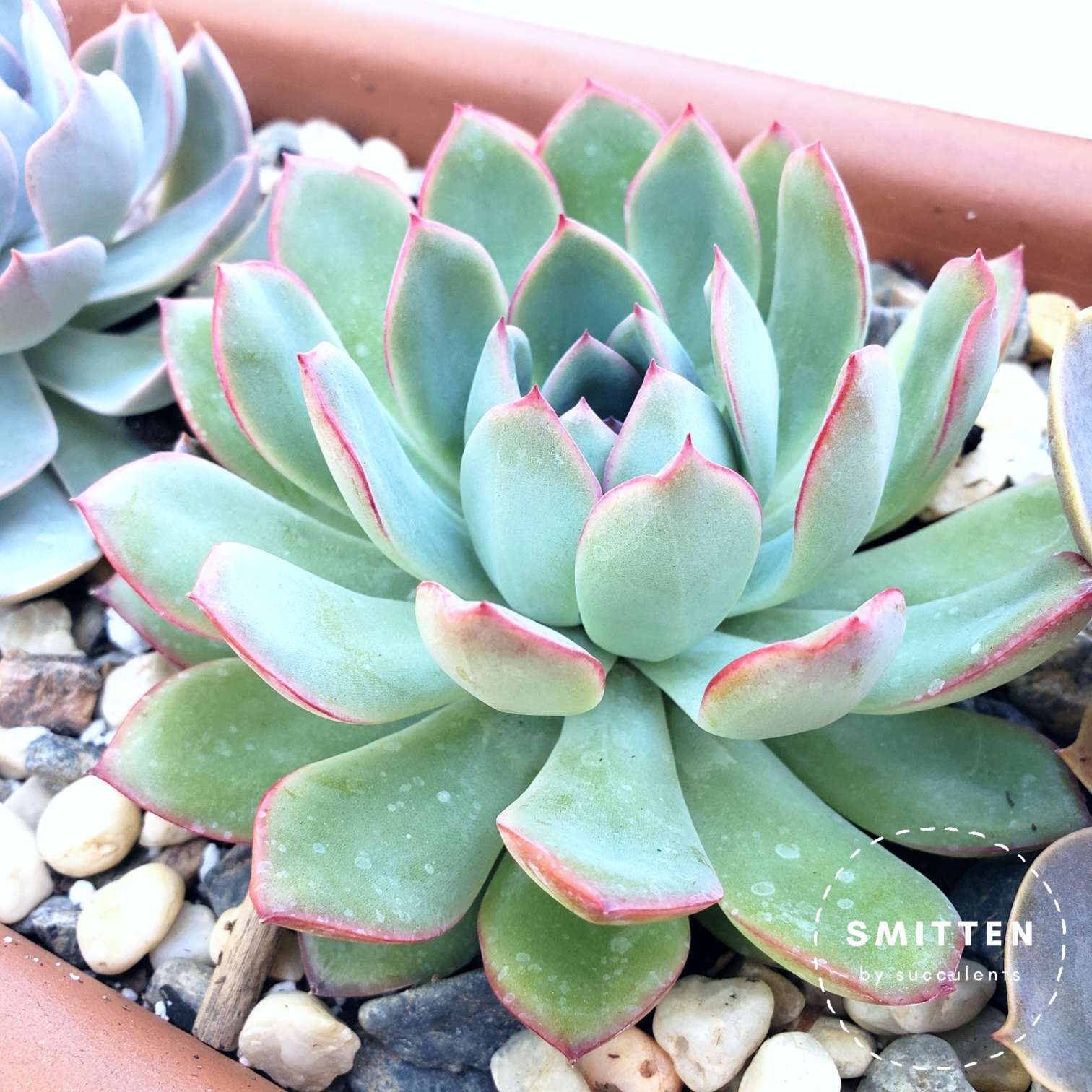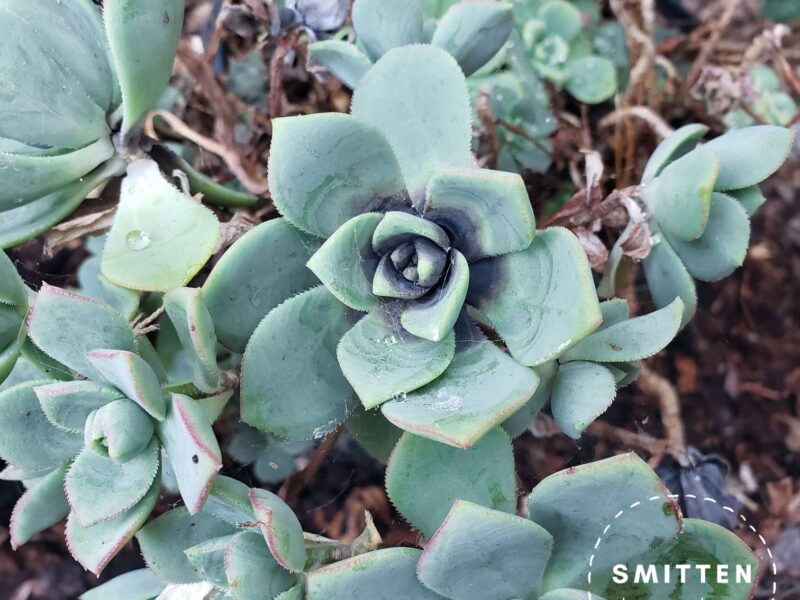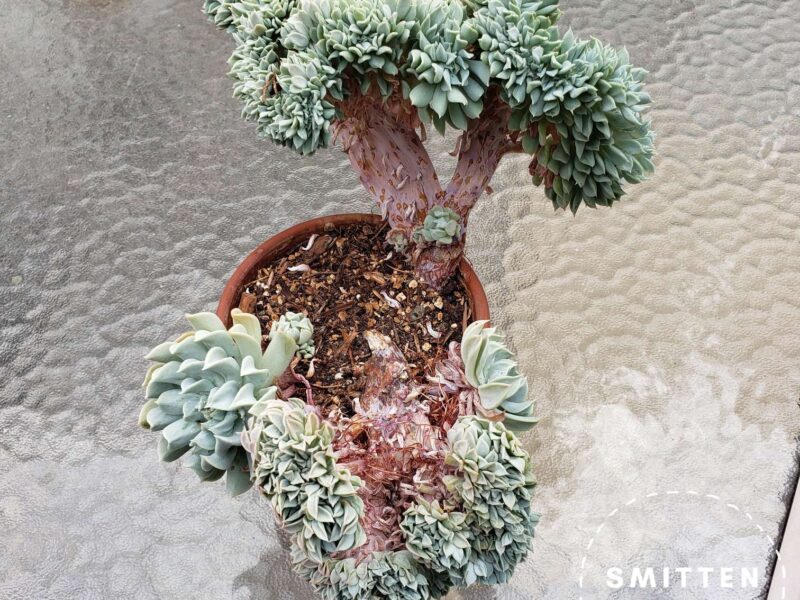This is a quick guide on how to take care of an Echeveria, which is a type of succulent. A succulent is a plant that stores water in its leaves, so it has thick or “succulent” leaves. Succulents usually come from a dry or desert-like environment. The genus Echeveria hail from the southern part of North America (Mexico), Central America, and the northwestern part of South America. An echeveria’s leaves take the shape of a rosette.
There are many species of Echeveria, so care can vary a bit between them. Below is a generic guide for all of them. Hybrid species tend to be more hardy or prolific.

Light
Echeveria like 6-8 hours of direct sun. Like other succulents, they prefer morning light over harsh afternoon light. Since they like full sun, they are great to keep outdoors.
However, they cannot tolerate freezing temperatures. If where you live reaches freezing, your Echeveria would appreciate being moved indoors. If your Echeveria will live indoors for long periods of time such as a whole season (winter) or you prefer keeping them indoors, it would prefer a sunny window or even grow lights.
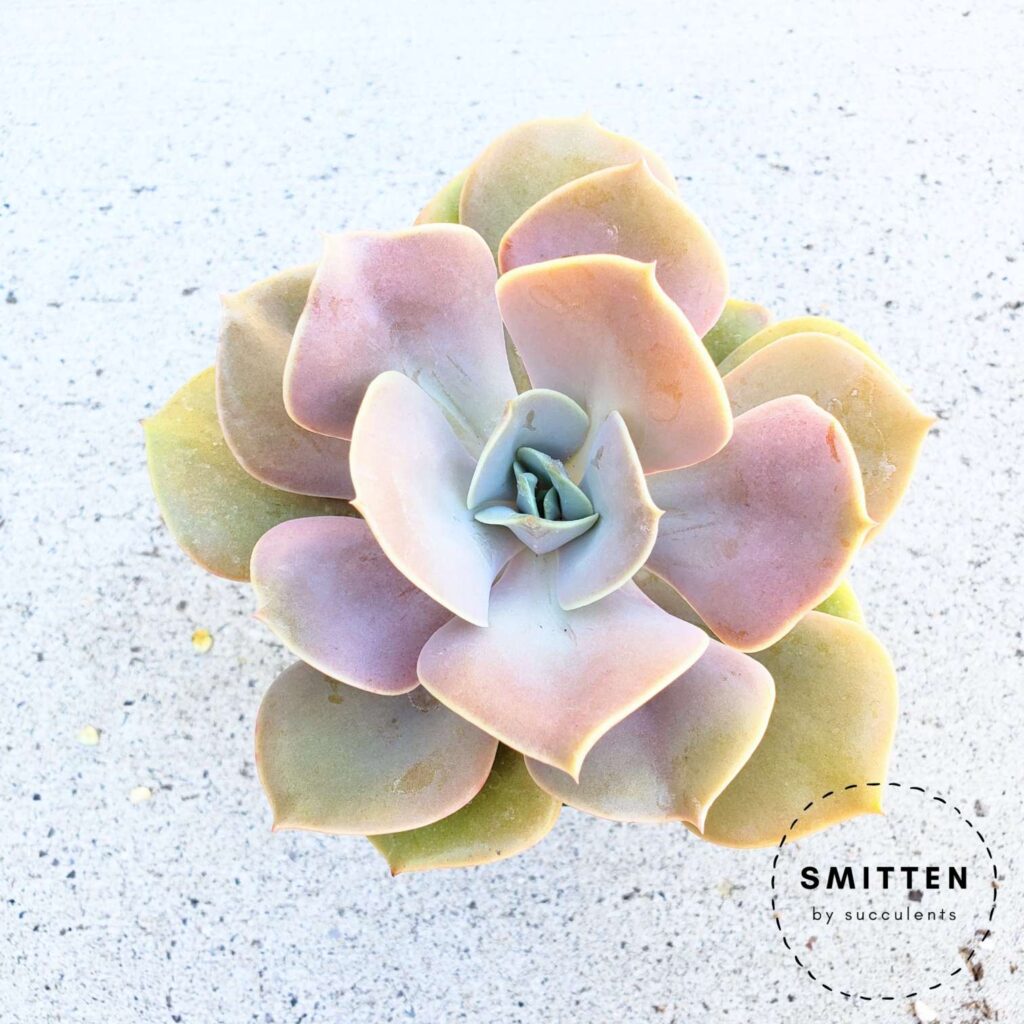
They get beautiful colors in bright direct light. This coloration is called stress colors. A lot of succulent collectors admire beautiful stress colors. Their coloration will depend on their species. Without as much light, they will usually be a shade of green.
Watering
Echeverias come from a desert-like environment, so they are used to dry environments and don’t like to be watered frequently.
They should only be watered when they show signs of thirst and not on a schedule. It’s easy to overwater them if you try to water them on a schedule, which can lead to its demise. Signs of thirst are:
- The leaves are concave or look somewhat hollow. They are not as full and chubby. This can be difficult to see if you’re new to their care.
- The leaves have wrinkles.
- The leaves are not firm. If you take a healthy leaf and hold its edges and gently squeeze it, it will have “give” and will fold a bit. If the leaf is firm, it does not need watering.
If your Echeveria is showing any signs of thirst, it would like a drink. For the watering method, they prefer all their soil to be soaked. If your Echeveria is in a pot, it’s best if it’s in a pot with a drainage hole, so the excess water can drain out. If there is no drainage hole, the water will stay in the pot, which can lead to rot. It can take a few days for an Echeveria to plump up again.
Soil
Soil is very important for succulents. Since Echeveria hail from a desert-like environment, they like if their soil mimics these conditions. In short, they prefer a well-draining substrate. The soil should dry out in about a day.
You can buy cactus and succulent soil at a gardening store. Sometimes these soils are not well-draining enough on their own, and they should be amended with more grit such as perlite, pumice, chicken grit, etc. An example ratio could be 1 part soil and 1 part grit.
If you’re keeping your succulents indoors, you should make your soil grittier since there is less airflow indoors. If your soil does not drain well or does not dry fast enough, it will keep your succulent’s roots wet, and it can lead to overwatering and rot.
Farina
Many Echeverias have farina or epicuticular wax on their leaves and stems. It looks like a white powder coating, and it protects them. It acts as our skin does, helping to protect the succulent from the sun, water, fungus, and more.
Farina is not dust nor dirt. It is best to avoid wiping off this protective layer. (I’ve made this mistake before, wiping it off thinking it was dust). If it is wiped off, it makes your succulent more susceptible to sunburn, overwatering, pests, and fungal infections. A succulent doesn’t compensate for the farina that’s been wiped off. A lot of succulent collectors admire perfect farina.
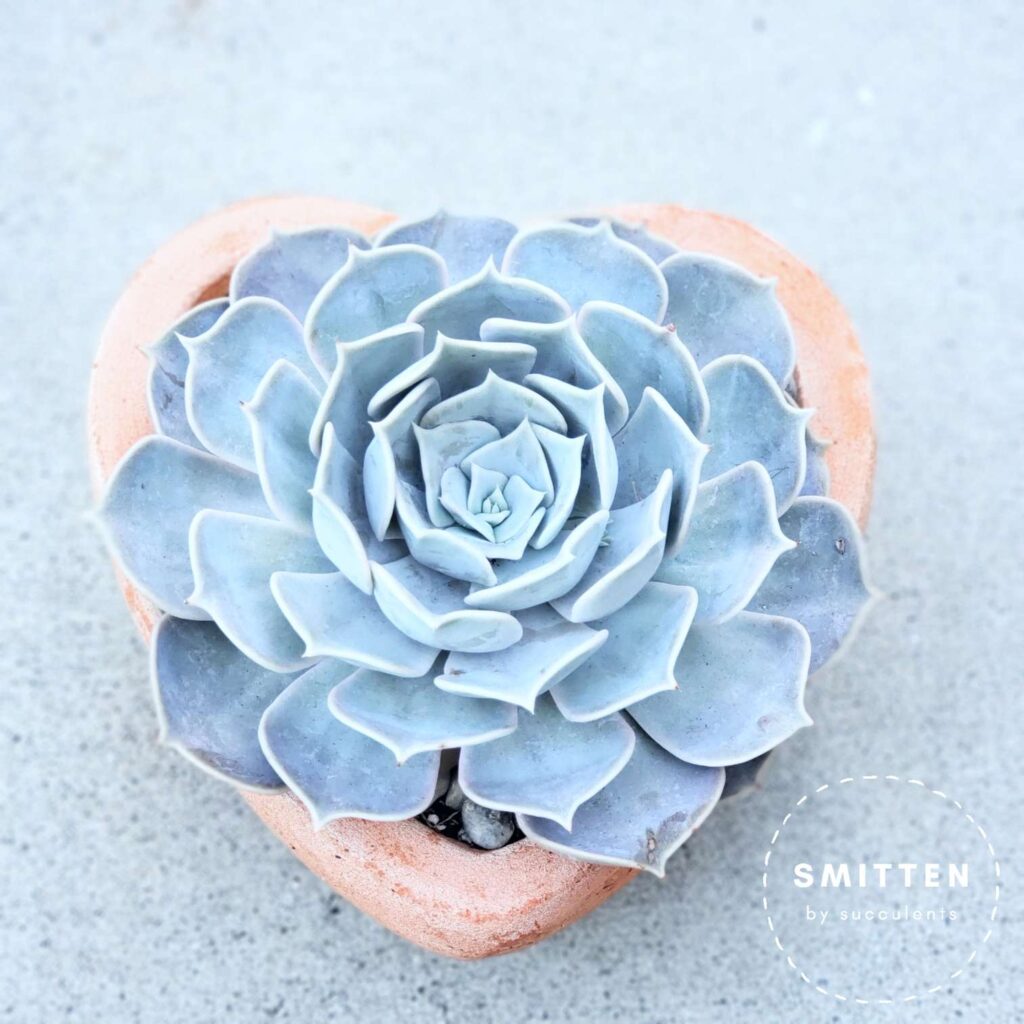
Common Issues
Stretching
If your Echeveria doesn’t get enough light, you will see them stretch (grow long or tall) searching for more light. They will lose their rosette shape. This stretching cannot be undone, but you can give it more light, and the new leaves will be in the rosette shape. You can also cut it and propagate it, and the new growth will have the rosettes.
Overwatering
When an Echeveria has translucent yellow leaves, it has been overwatered. Overwatered leaves can be mushy and fall off easily. It’s translucent because the cell walls have burst and it’s full of water. You cannot propagate from overwatered leaves.
Overwatering can be caused by different things. It can be from watering too often, or it can be due to soil retaining too much water. If it’s due to watering too often, you’ll want to follow the watering tips above. If it’s due to the soil not drying fast enough, you’ll want to repot your Echeveria in a new well-draining soil.
When an Echeveria has been overwatered, it is susceptible to rot, and if left in this state, it will rot and die. If you see that your Echeveria has translucent yellow leaves, you will want to act on it. Remove any translucent leaves. Unpot the succulent and let the roots dry out. If there is any black on the leaves or stem, that is rot. If there is black on the stem, you need to cut the top off and make sure there is no black in the stem. If there is black all the way up the stem, it is unfortunately dead.
Thank you for checking out my quick guide on how to take care of an Echeveria. If you have any questions, feel free to leave a comment, and I’ll try my best to help out.
